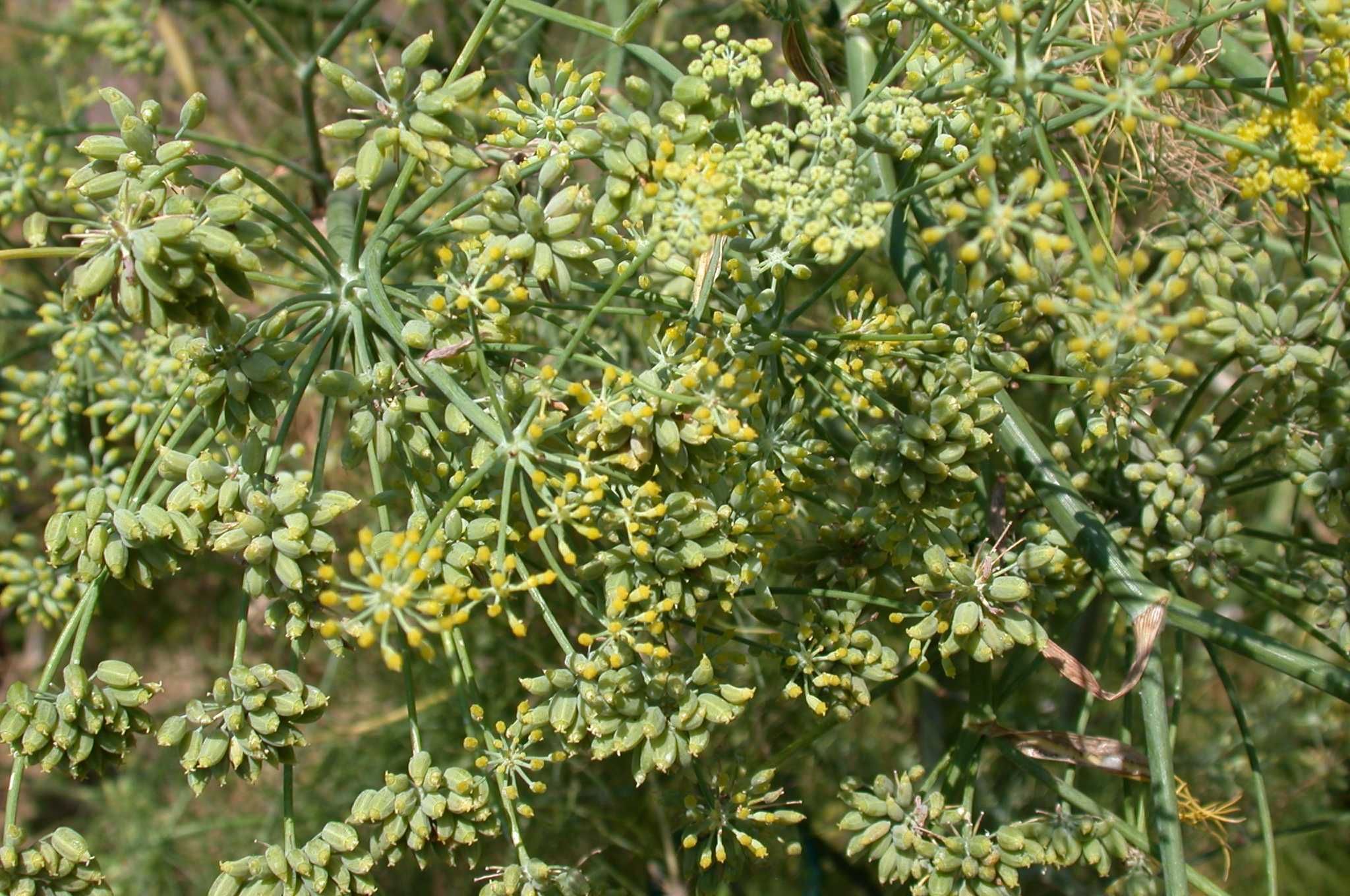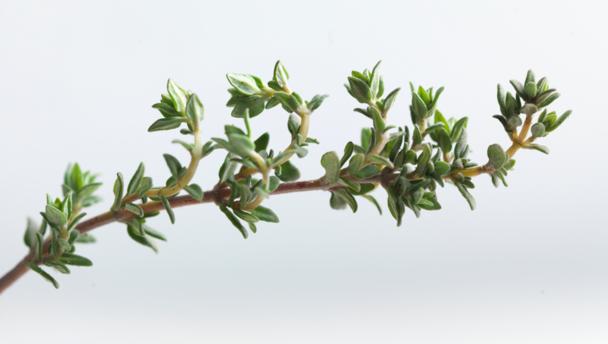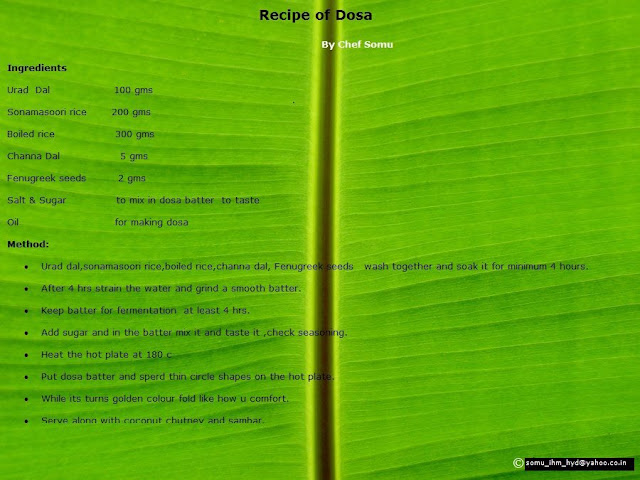VARIETIES OF HERBS
Culinary herbs are basically distinguished from vegetables in
that they are used in smaller amounts, and they also provide flavor,
rather than substance, in food. A number of herbs are used in food
throughout the world. Some of the popularly used herbs are listed
below.
VARIETIES OF HERBS
Mint

Mint is used throughout the world to flavor
everything from lamb to candy. It's also a
great garnish and breath freshener.
Spearmint is the variety of mint and it's the
best choice for savory dishes.
Basil

Basil is also known as Sweet Basil or Tulsi.
Basil is most commonly recommended to be
used fresh; in cooked recipes it is generally
added at the last moment, as cooking quickly
destroys the flavour. Basil is absolutely
essential for Italian cooking.
Cilantro or Coriander

Cilantro or coriander not only has two common
names, but two entirely different identities and
uses. Cilantro, Coriandrum sativum, describes
the first or vegetative stage of the plant's life
cycle. After the plant flowers and develops
seeds, it is referred to as coriander.
Cilantro is the Spanish word for coriander
leaves. It is also sometimes called Chinese or
Mexican parsley. Technically, coriander refers
to the entire plant. It is a member of the carrot
family.
Coriander is the dried seed of the cilantro. The
seeds are round like tiny balls. They are used
whole or ground as a flavoring for food and as
a seasoning. The seeds are used in curries,
curry powder, pickles, sausages, soups,
stews, and ratatouille. The essential seed oil is
used in various herbal remedies and dietary
supplements, and to flavor gin, vermouth,
liqueurs, tobacco and perfumery.
Chervil

Chervil often referred to as the “gourmet or
French parsley,” chervil tastes mildly of licorice
combined with pepper imparting certain
freshness to a dish. Fresh or dried, it is a
bright green and quite delicate and should be
added to a dish at the end of cooking. Chervil
has a tendency to enhance the flavors of other
herbs when used in combinations.
Dill

Fresh and dried dill leaves (sometimes called
"dill weed" to distinguish it from dill seed) are
used as herbs. The leaves and umbels of dill
are a traditional favorite for pickling, but they
can be used with a wide range of foods. Dill
leaves provide a pleasantly strong seasoning
when chopped into garden salads, cottage
cheese, potato salads, meat or fish dishes,
soups, stews, and sauces.
Chives

These slender, hollow shoots have a mild
onion flavor. Many cooks use scissors to cut
fresh chives, sprinkling them like confetti on
potatoes, eggs, and salads. They lose much
of their flavor when they're frozen or freezedried.
Anise

Anise is the dried ripe fruit of the herb
Pimpinella anisum. Anise is used whole or
crushed in cookies, cakes, breads, cheese,
pickles, stews, fish, and shellfish. Roasting
enhances the flavor.
Fennel

The leaves and stems can be used in much
the same way as celery. Florence fennel bulbs
are used in salads or as the main ingredient in
a salad or lightly steamed as a vegetable
accompaniment. Fennel seeds are the
ingredient that gives Italian sausage its
characteristic taste.
Marjoram

Marjoram is sweeter and milder than its
close relative, oregano. It's often used to
season meats and fish, and works best when
its added near the end of the cooking period.
Fresh is best, but frozen or dried marjoram are
acceptable substitutes. It combines well with
many other herbs and is used with thyme,
tarragon, bay, and parsley to make a bouquet
garnish.
Oregano

(Pronounced: uh-REG-uh-no)
Oregano is a popular herb in Mediterranean
countries, where it's often used to season
tomato sauces, meat dishes, and pizzas.
Mexican oregano has a mintier taste than
ordinary oregano.
Bay leaves

Bay leaves are used extensively in
Mediterranean cuisines, lending a woodsy
flavor to sauces, stews, and grilled meats. It's
best to add whole leaves, then remove them
before serving the dish.
Hyssop

(pronouced: HISS-up)
The leaves and small blue flowers of this plant
are used as a garnish or to impart a mild,
slightly bitter flavor to salads, soups, and
liqueurs.
Parsley

Parsley is prized both for its looks and for its
fresh, grassy flavor. There are two common
varieties: the mild curly parsley and the more
flavorful Italian parsley. Frozen parsley is a
good substitute for fresh, but dried parsley
adds only color.
Rosemary

The Italians are particularly fond of this
pungent herb with its needle-like leaves. They
often use it to flavor meats and tomato
sauces. Rosemary stems, stripped of their
leaves, can also be used as skewers for
kabobs. Dried rosemary is an excellent
substitute for fresh.
Thyme

This herb is widely used in Mediterranean
countries to flavor stews and meat sauces. It's
often used in combination with other herbs,
like rosemary, parsley, and oregano.
USES OF HERBS
The culinary uses of herbs are vast.
1) Palatability - The flavour and the colours make the dish
more palatable.
2) Enhance flavour - Those wishing to retain flavor while
reducing their intake of salt find herbs indispensible in
their cooking.
3) Improve Appearance: The appearance of the food
4) Helps in digestion – Herbs aid in digestion.
5) Cost Effective – Herbs are relatively cheaper. They are
affordable by all.
6) Nutritional Benefits - Everyone benefits nutritionally when
herbs are part of a recipe. For example, parsley is the
third most nutritious vegetable rich in vitamin A and
chlorophyll which contributes to healthy red blood cells.All
fresh herbs are a healthy addition to main courses,
soups, salads, and side dishes.
yours chef somu0408




